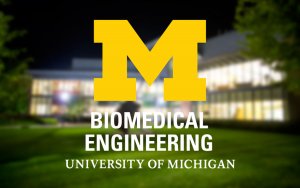Presented By: Biomedical Engineering
Brendan Harley, Sc.D. - BME Guest Speaker
Building tissues engineering complexity through biomaterial design

Advances in the fields of tissue engineering and regenerative medicine require biomaterials that instruct, rather than simply permit, a desired cellular response. A major challenge to progress in our field is the striking cellular and structural heterogeneity of the tissues in our bodies, which can be hierarchical, graded, and heterogeneous over multiple length and time scales. Prof. Harley’s research program is developing approaches to pattern biomaterials at the structural and biomolecular levels to replicate these heterogeneities in order to instruct desired cell behaviors. These efforts seek to provide new insight regarding the degree of biomaterial complexity required to investigate processes related to development, disease, and regeneration. I will describe a collagen biomaterial under development to address barriers preventing regeneration of musculoskeletal tissues such as orthopedic insertions and craniomaxillofacial bones. Here we are using bioinspired design motifs to create composite biomaterials able to improve cell bioactivity and mechanical competence in order to address mechanistic and translational challenges. I will subsequently describe development of a gelatin hydrogel system as well as microfluidic forming techniques to create libraries of optically-translucent hydrogels containing overlapping patterns of cell, matrix, and biomolecule cues. We are using this platform to explore the coordinated impact of structural, biomolecular, and metabolic cues on niche-mediated regulation of hematopoietic stem cell fate as well as invasion and therapeutic resistance in glioblastoma, the most common and lethal form of brain cancer. I will highlight work that employs these platforms to regulate processes such as self-renewal vs. quiescence; signaling and remodeling of artificial perivascular environments; as well as invasion and therapeutic resistance.
Brendan Harley, Sc.D.
Dept. of Chemical & Biomolecular Engineering
Carl R. Woese Institute for Genomic Biology
University of Illinois at Urbana-Champaign
bharley@illinois.edu | www.harleylab.org
Brendan Harley, Sc.D.
Dept. of Chemical & Biomolecular Engineering
Carl R. Woese Institute for Genomic Biology
University of Illinois at Urbana-Champaign
bharley@illinois.edu | www.harleylab.org
Explore Similar Events
-
Loading Similar Events...
